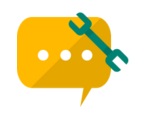Microsoft's multipronged strategy for bringing speech to IoT devices

Microsoft has been stepping up its game around connecting its Azure cloud services to Internet of Things (IoT) devices. But few may realize the company also is simultaneously working to bring its various speech capabilities to IoT devices, too.

I recently stumbled onto a Microsoft presentation from its February WinHEC China 2016 workshop in Taipei. (I didn't even realize Microsoft held this three-day event.) That presentation, "Natural User Interface Technologies for IoT," which was targeted at developers, explains the company's multipronged strategy on the IoT-speech front.
Microsoft provides IoT developers with various tools for integrating speech with their devices. There are built-in Windows 10 speech application programming interfaces (APIs) for tasks like dictating a simple message and Web search. There are natural-language services -- known as Language Understanding Intelligent Service (LUIS) -- that are part of Microsoft Research's Oxford API set, and are available for non-Windows platforms, too. There's Bing Translate. And there's Cortana, Microsoft's personal digital assistant.
Figuring out which of these tools is best for which kinds of tasks seemingly can be a bit tricky. Company officials provided a framework for guidance during WinHEC, listing some potential scenarios, like controlling a sous-vide machine by voice (using a combination of LUIS with Windows 10 or Oxford Speech APIs), and controlling a robot using voice (using Windows 10 local speech APIs).
In the home automation/device control example, Microsoft showed how a user could check whether her/his garage door is closed with voice queries without having to use a phone or tablet.
The WinHEC China 2016 presentation also offered IoT developers some guidelines for using face detection, identification and verification using Project Oxford APIs.
At previous Microsoft Build developers conferences, Microsoft's evolving IoT platform was a big theme. At this year's Build 2016 show, I'd expect more from Microsoft around IoT and its revamped Connected Car strategy, which it began sketching out earlier this year at CES.
Given Microsoft CEO Satya Nadella and HoloLens Chief Alex Kipman both recently spent time with connected-car-platform vendor Dash, I wouldn't be surprised if we see Dash figure in some Build demos this year.
Microsoft also may be poised to reveal at Build that it's moving Project Oxford out of research and into the commercialization path. Microsoft could be rebranding some of the Oxford services as Azure Cognitive Services or Azure Intelligent Services, as the infamous Walking Cat/h0x0d recently noted on Twitter.